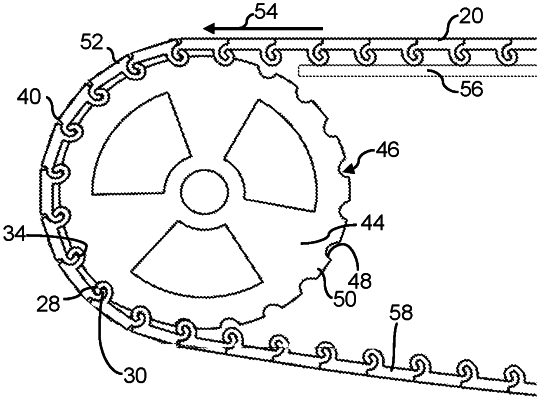| CPC B65G 15/48 (2013.01) [F16G 3/10 (2013.01); B65G 17/083 (2013.01)] | 24 Claims |

|
1. A conveyor belt module comprising:
a module body extending in a width direction from a first side to a second side and in a length direction from a first end to a second end;
a first hook disposed at the first end of the module body and having a tip end;
a second hook disposed at the second end of the module body and having a tip end;
wherein the first hook forms a first curved channel having an open end and a closed end and defining a first path perpendicular to the width direction;
wherein the first curved channel is configured to receive the second hook at the second end of an adjacent conveyor belt module to connect the conveyor belt module to the adjacent conveyor belt module at a hinge joint at which the connected conveyor belt modules can articulate as the second hook advances and retreats along the first path;
wherein the second hook and the first curved channel are complementary in shape so that a portion of the second hook of the adjacent conveyor belt module when received in the first curved channel fills the width of a portion of the first curved channel in which the second hook is received; and
wherein the first hook bends upward to the tip end and the second hook bends upward to a tip end or both the first hook and the second hook bend downward to their tip ends.
|